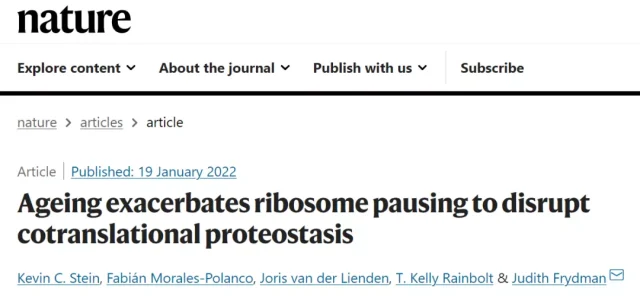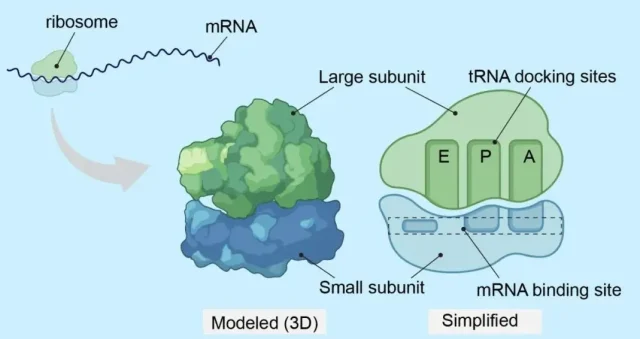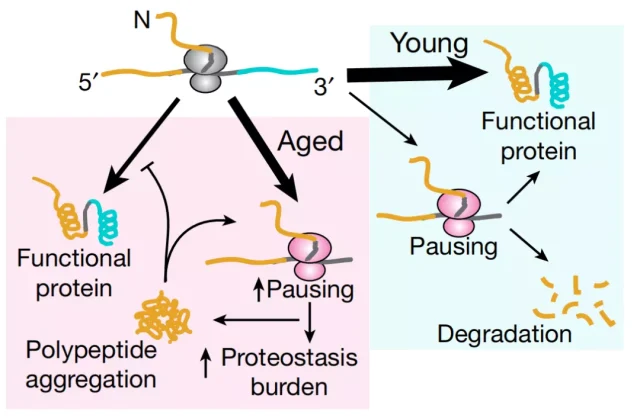Nature: The root of aging is in the ribosome?
- Normal Liver Cells Found to Promote Cancer Metastasis to the Liver
- Nearly 80% Complete Remission: Breakthrough in ADC Anti-Tumor Treatment
- Vaccination Against Common Diseases May Prevent Dementia!
- New Alzheimer’s Disease (AD) Diagnosis and Staging Criteria
- Breakthrough in Alzheimer’s Disease: New Nasal Spray Halts Cognitive Decline by Targeting Toxic Protein
- Can the Tap Water at the Paris Olympics be Drunk Directly?
Nature: The root of aging is in the ribosome?
- Should China be held legally responsible for the US’s $18 trillion COVID losses?
- CT Radiation Exposure Linked to Blood Cancer in Children and Adolescents
- FDA has mandated a top-level black box warning for all marketed CAR-T therapies
- Can people with high blood pressure eat peanuts?
- What is the difference between dopamine and dobutamine?
- How long can the patient live after heart stent surgery?
Nature: The root of aging is in the ribosome?
Nature’s heavy discovery: The root of aging is in the ribosome? Aging exacerbates ribosome pauses, disrupts protein homeostasis
Natural life, sentient beings, cannot escape the fate of aging. On a microscopic level, aging leads to a decline in cellular fitness and a loss of protein function.
However, the mechanism by which aging leads to protein aggregation is not fully understood.
In fact, scientists already know that protein aggregation with age is a problem associated with many diseases.
Therefore, delving into the basic biology of these diseases and understanding the mechanisms that cause them can help us choose better treatments.
The root of aging lies in the ribosome? Nature’s latest research finds that aging exacerbates ribosome pauses and disrupts co-translational protein homeostasis!
Recently, researchers from Stanford University published a research paper entitled: Ageing exacerbates ribosome pausing to disrupt cotranslational proteostasis in the top international academic journal Nature .
The study proposes that as cells age, ribosomal translational pauses will increase, leading to ribosome-related quality control (RQC) overload and nascent peptide aggregation, which critically contribute to protein homeostasis and systemic decline during aging .
The paper opens a new direction of research, tracing the question of how aging causes protein aggregation to age-dependent damage to the ribosome.

Ribosome is a ubiquitous organelle in cells, mainly composed of rRNA and protein. In the “central dogma”, the process of mRNA translation into protein occurs in ribosomes.
Its function is to convert the genetic code into amino acid sequences and build protein polymers from amino acid monomers according to the instructions of mRNA.
Therefore, ribosomes are also known as intracellular protein synthesis machinery .

Structure and function of the ribosome
“Aging is accompanied by dysregulation of cellular protein homeostasis, which underlies many age-related protein misfolding diseases. However, how aging disrupts protein homeostasis remains unclear.
Since nascent peptides place a huge burden on the protein homeostasis network, we hypothesized that changes in translation efficiency during aging may help drive a breakdown in protein homeostasis.”
In this latest study, the research team found that aging alters the dynamics of translation elongation in C. elegans and Saccharomyces cerevisiae.
Ribosome pausing is exacerbated at specific locations (e.g. polybasic regions) in aging nematodes and yeast , leading to increased ribosomal collisions that trigger ribosome-related quality control (RQC) .
Indeed, long-lived yeast mutants have reduced age-dependent ribosomal pausing and increased lifespan, specifically associated with a greater flux of the RQC pathway.
The researchers also found that nascent polypeptides that display age-dependent ribosomal pauses in C. elegans are strongly enriched in age-dependent protein aggregates, further linking ribosomal translational pauses to a breakdown in protein homeostasis.

Investigating the effects of aging on translational dynamics and co-translation
By combining experimental and computational data analysis, the researchers found that the function of ribosomes deteriorates with age, and at the same time, defective proteins increase, making the quality control fail-safe mechanisms that would prevent protein aggregation unable to function. effect.
“A protein is formed at the most fragile and critical moment in life — when it’s most prone to misfolding — precisely when it’s formed,” said Judith Frydman , Ph.D., professor of biology and genetics at Stanford University and corresponding author of the study . when.”

Senescence exacerbates ribosome pausing at polybasic regions in yeast
The research team used a technique called ribosome mapping, which allows them to see exactly how ribosomes move on mRNA during translation.
They observed that the periodic movement of ribosomes became slower in older cells, and that the decline in ribosomal performance coincided with an increase in age-related aggregation of misfolded proteins.
 Age-dependent aggregation of truncated nascent polypeptides after ribosome pause
Age-dependent aggregation of truncated nascent polypeptides after ribosome pause
“There are two scenarios where aging causes an increase in ribosomal collisions and a stall, but the cell loses its safety net to handle it,” explains first author Kevin C. Stein , Ph.D.
 Aggregation of ribosome-suspended and truncated nascent polypeptides during aging
Aggregation of ribosome-suspended and truncated nascent polypeptides during aging
Dr. Fabián Morales-Polanco , the other lead author of the study , is excited that this discovery is only the beginning of a very fascinating future, which opens up a new research direction, and with it comes countless questions waiting to be answered, and potentially hundreds of papers.
In conclusion, this study proposes that as cells age, ribosomal translational pauses will increase, leading to ribosome-associated quality control (RQC) overload and nascent polypeptide aggregation, which critically contribute to protein homeostasis and disruption during aging. Systemic decline .
Reference :
https://www.nature.com/articles/s41586-021-04295-4
Nature: The root of aging is in the ribosome?
(source:internet, reference only)
Disclaimer of medicaltrend.org
Important Note: The information provided is for informational purposes only and should not be considered as medical advice.



